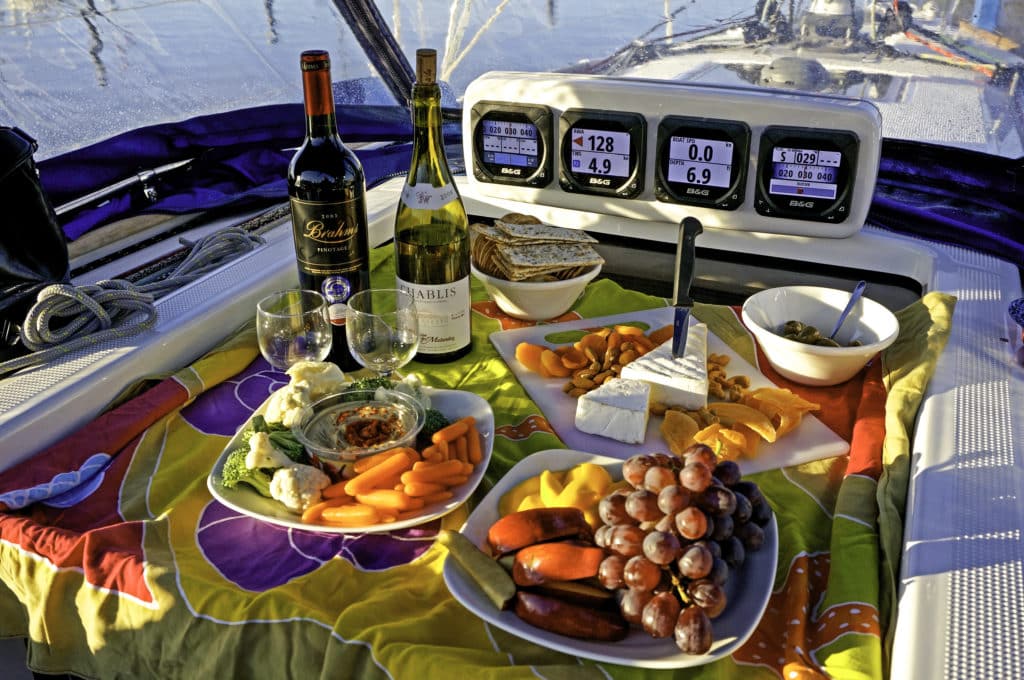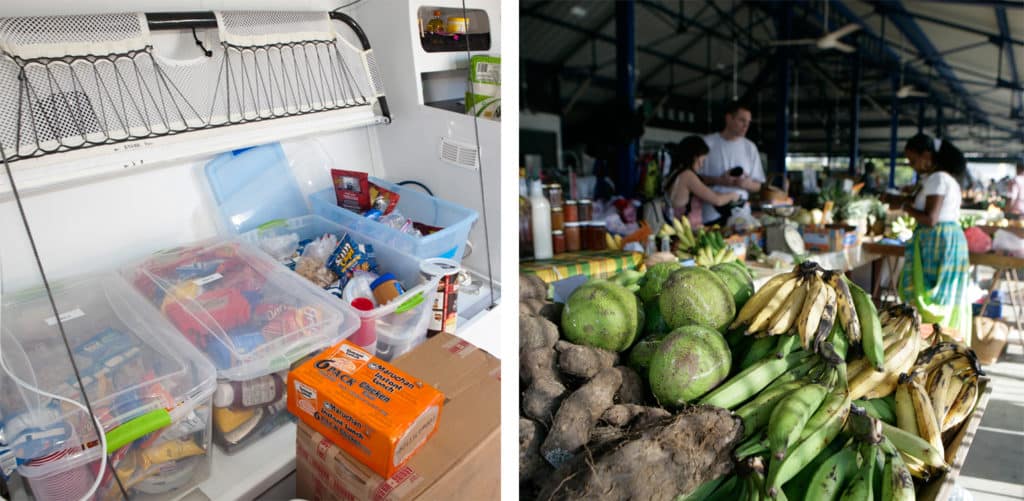
For vacationers who love good food, exploring local markets in far-flung locales is an adventure that’s part of the chartering experience. If you’re one of those sailors, these tips for self-provisioning will make it both cost-effective and fun. Even if you elect to have your charter company provide full or partial provisioning, you can use these tips to decide on your food selections — and make life easier once you’re aboard.
Before Your Charter
- As part of your pre-trip planning, the designated cook should do some food research. In foreign or far-flung destinations, don’t count on finding all the familiar grocery items you’d find in your own local supermarket. Unlike in the U.S., in many parts of the world, markets sell only produce that is either locally grown or in season at the time, and many convenience foods we take for granted in U.S. stores simply aren’t available. Search online for foods and recipes indigenous to your charter area; this will give you a good idea of the items that will be on local market shelves. To take it further, have a look at provisioning lists from bareboat companies based in the area. Most companies post these shopping lists online for people who elect to have the company provision the yacht for them. It’s likely that area markets will stock the foods that are on those lists.
- If you’re sailing with people whose food preferences you don’t know, ask your crewmates some basic questions before you do anything else, such as: Is there anything you absolutely hate or cannot eat? Are you a vegetarian? Do you eat red meat, or prefer only fish and chicken? Which soft drinks, beers and wines do you prefer? Do you drink coffee or tea?
- Once you know the foods that are readily available in your charter area and the preferences of your crew, create a daily menu plan for breakfast, lunch, and the number of dinners you plan to eat on board. Make your menu using recipes native to the area you’ll be visiting. It’s fun and will enhance your appreciation of both the cuisine and the location. Find local recipes online, or invest in a cookbook featuring local delicacies and recipes particular to the area. Be sure to bring the recipes with you when you sail.
- Using your menu and compiled recipes, make a detailed shopping list. Having your recipes in hand (rather than in your head) ensures you won’t forget to list key ingredients.It’s helpful to organize the list according to the standard sections in most supermarkets: dairy, meat and seafood; frozen food; produce; dry stores; and so forth.
- Be sure to include staples on your list. In terms of provisions, most bareboats are exactly that. You will likely need to buy paper towels, toilet tissue, cleaning supplies, dish soap and the like. Keep in mind that bareboats rarely even keep staples such as spices on board — sometimes not even salt and pepper. Your charter company should be able to tell you what items, if any, will be on the boat when you arrive.

When You Arrive at Your Boat
- Designate one or two crewmembers — preferably the cook — to do the shopping for the group. If an entire boatload of charterers trek to market, utter chaos usually ensues. Markets at charter hubs are generally very crowded on departure days, so the fewer bodies, the better. If the market doesn’t offer delivery to yachts (many do), put the other crewmembers on standby to help carry the provisions back to the boat when the shopping is done.
- Stow wisely. Again, categorizing like items is helpful, especially if several people will be helping themselves to what’s in the fridge or food lockers. Most bareboats have freezers; stack the meat or seafood you want to freeze in the order you plan to use it, putting in last what you’ll use first. In the fridge, store cheeses, cold cuts and snack items near one another. Keep yogurt and milk together, as well as fruits and veggies that need refrigeration.
- For unrefrigerated snack foods, consider setting up snack stations: one or two places where the entire crew can easily access between-meal bites such as nuts, chips, cookies and fruit. Baskets or hanging nets work well for this because they avoid excessive opening of the fridge or having to dig through a pile of goods deep in a locker.
- If your menu includes continental-type breakfasts and sandwich-style lunches, the crew can share the meal-making responsibilities. For cooked lunches or dinners, anyone can use the printed recipes the cook brought along to share in the meal prep. Using these simple tricks will not only make provisioning — and eating meals aboard — easier and more fun, but it will also save money and avoid unused food and drink. At the end of almost all bareboat charters, there’s plentiful food left behind — and you can’t take it with you.
- Finally, take the money you saved by avoiding unnecessary food items and enjoy spending it elsewhere on your vacation. Suggestion: Treat the cook and the whole crew to a lavish dinner or two ashore!
CW contributing editor Lynda Morris Childress has provisioned for charters and extended cruises at ports around the world. She spends each sailing season chartering in Greece as first mate and chef (and provisioner) on her Atlantic 70 cutter, Stressbuster.








